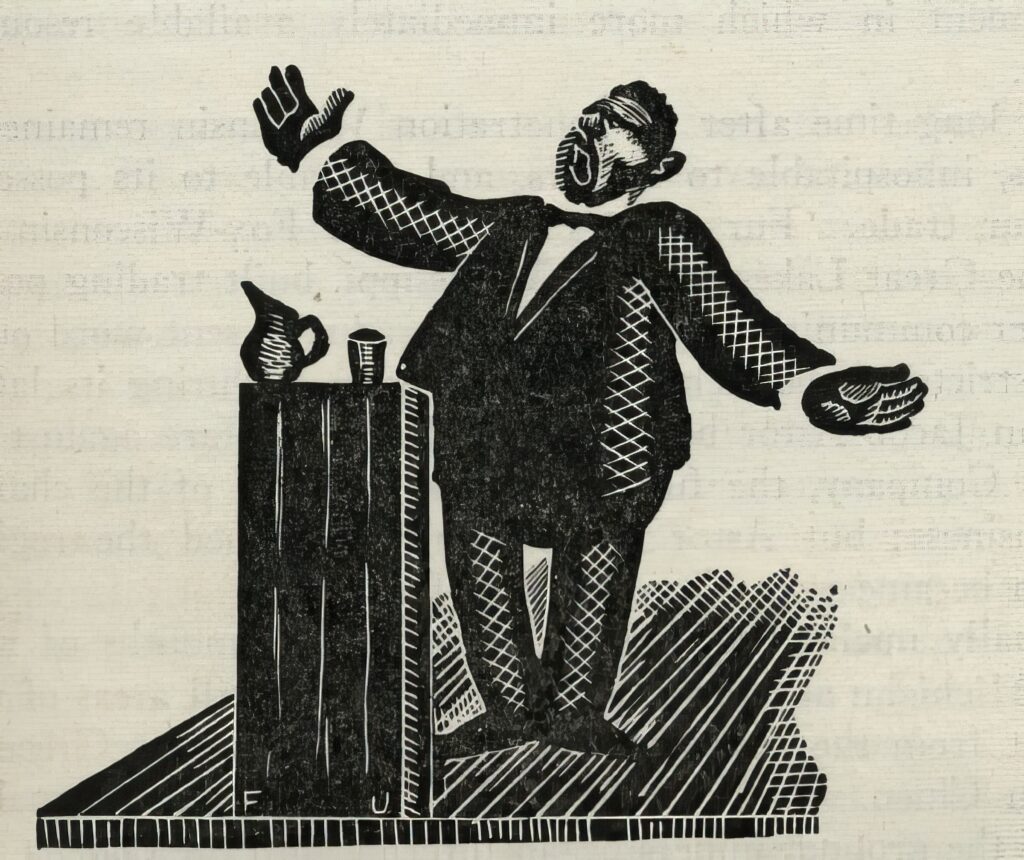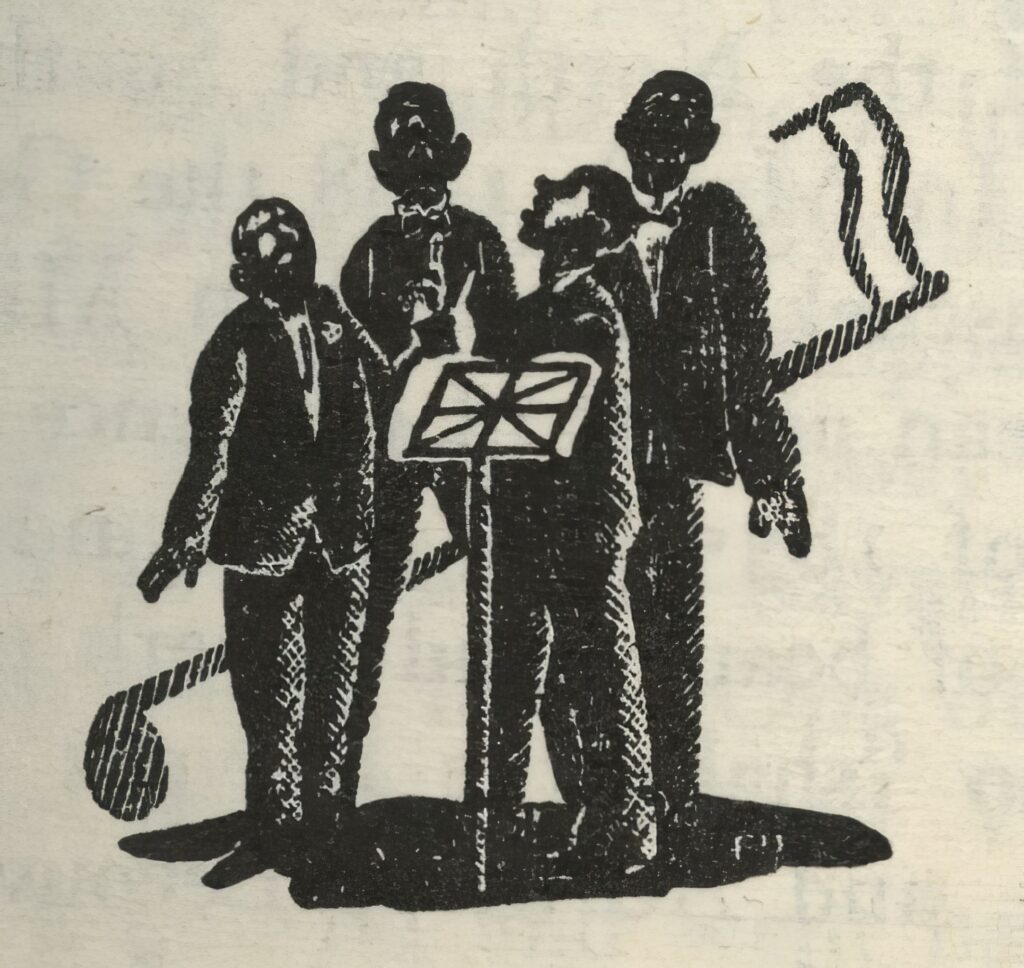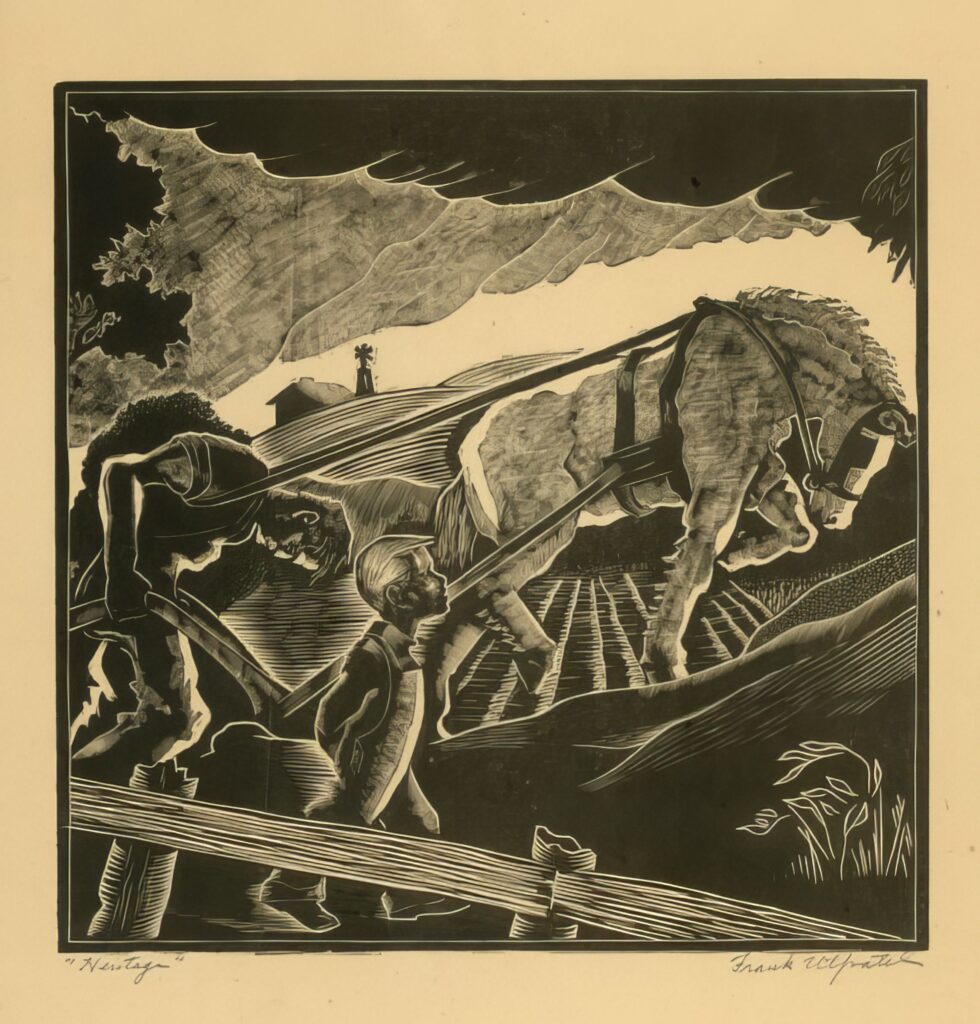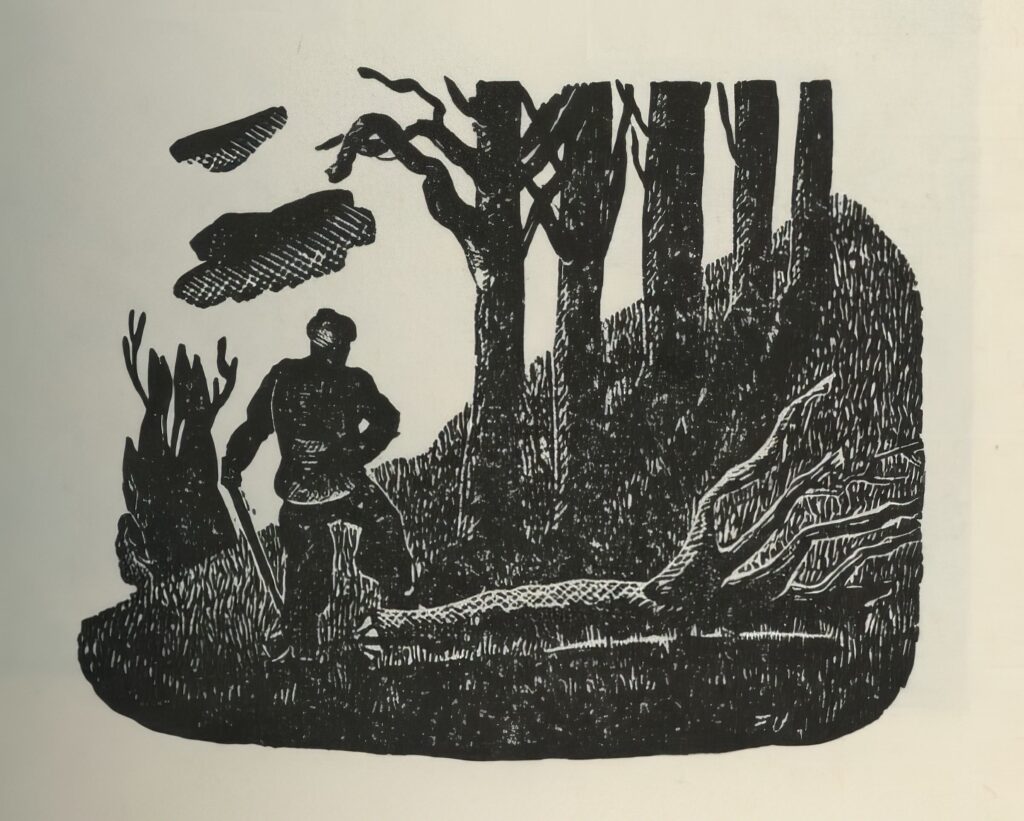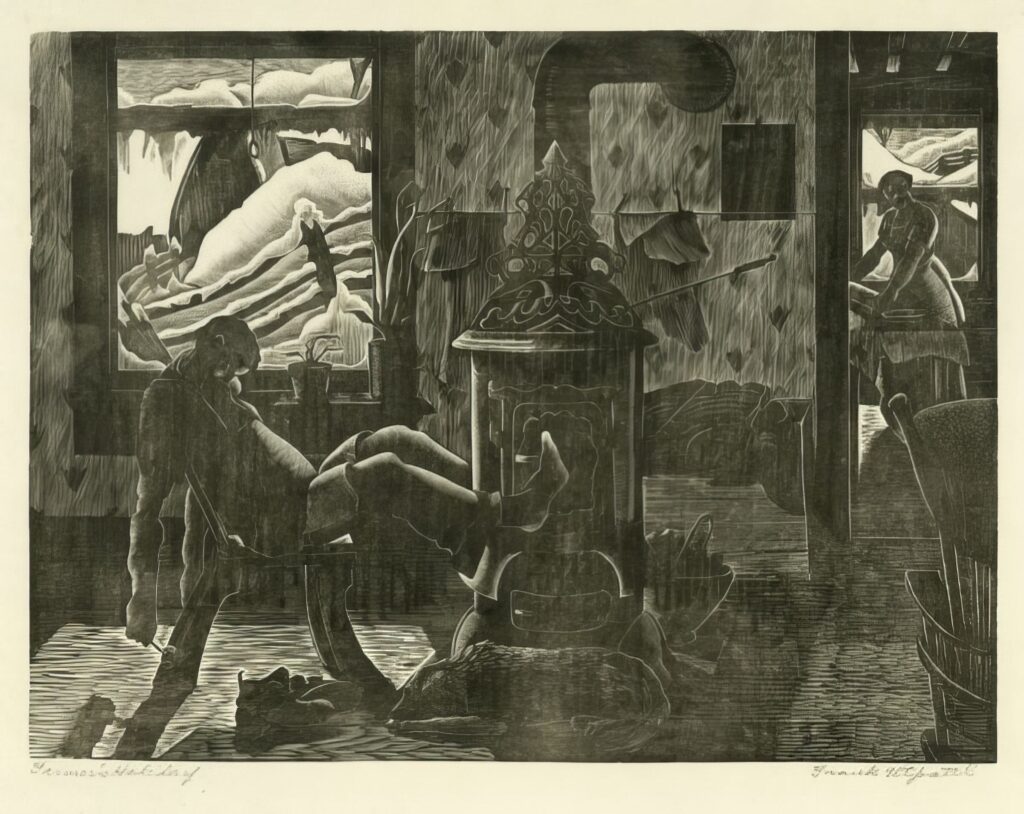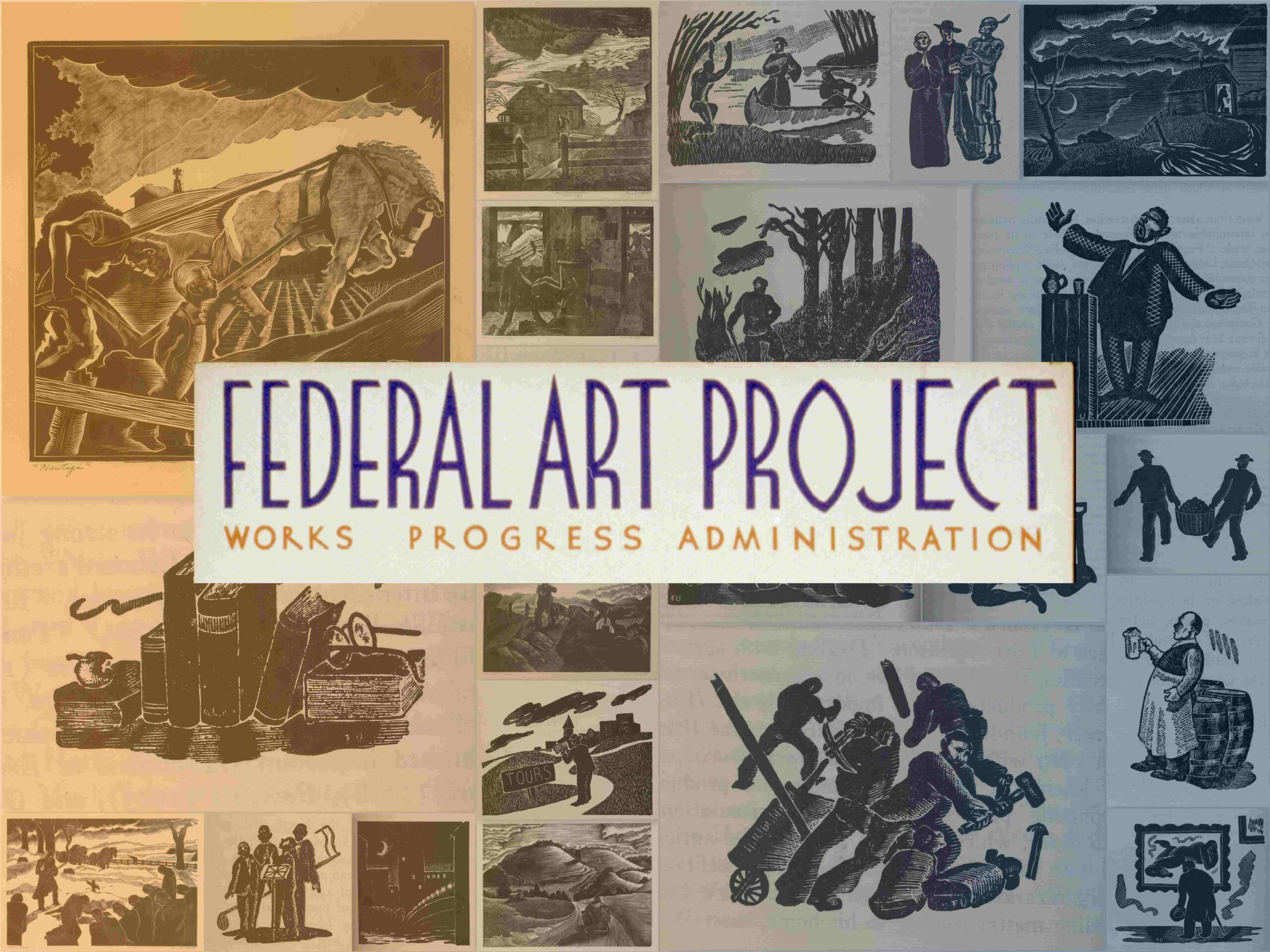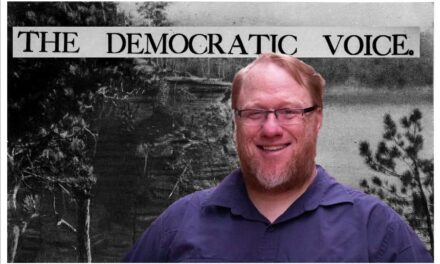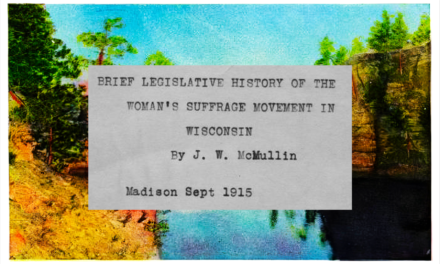Among the many artists employed by the Works Progress Administration’s Federal Art Project in Wisconsin during the 1930s, Frank Utpatel left behind a uniquely haunting artistic legacy. Born in 1905 in Waukegan, Illinois, Utpatel studied at the Milwaukee Art Institute and Art Institute of Chicago before embarking on a prolific career as a woodcut artist and illustrator.
It was his stark, moody woodcut prints depicting scenes of Depression-era life that made Utpatel a renowned figure in Wisconsin’s art world even before joining the WPA’s Federal Art Project. All artists involved were tasked with creating public works for display in government buildings, libraries, schools and hospitals across the state.
Utpatel’s evocative engravings and block prints provided a window into the hardships and resilience of ordinary Wisconsinites enduring the economic calamities of the Great Depression. His woodcuts featured images like solitary figures trudging down desolate rural roads or gaunt families huddled around meager camp fires – haunting glimpses into the harsh realities many faced.
At the same time, Utpatel also injected notes of whimsy and dark humor into his illustrations of strange, otherworldly creatures and mysteries of the natural world. An early pioneer in depicting the “American Scene” through his art, he garnered national recognition through exhibitions in New York City and Chicago.
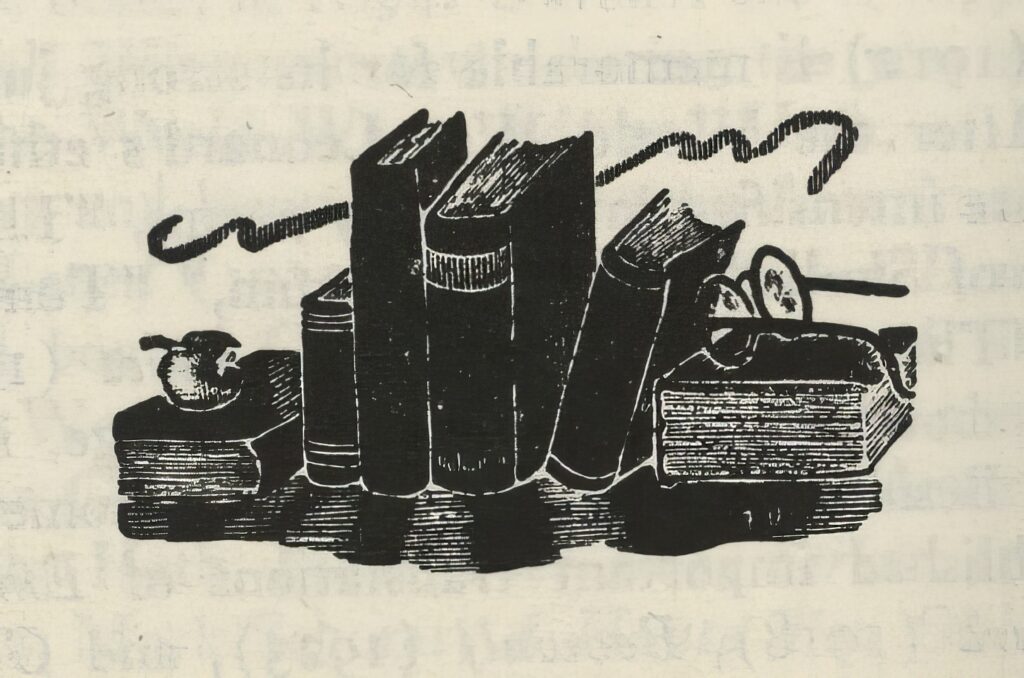
The Works Progress Administration (WPA) was a federal employment program created in 1935 under President Franklin D. Roosevelt’s New Deal initiatives. Its goal was to put millions of unemployed Americans back to work during the Great Depression while also stimulating the economy.
In Wisconsin, the WPA was eagerly implemented as soon as funding became available. From 1935 to 1943, the program employed an average of 43,000 people per year in the state, paying wages that were about 60% of private sector rates.
The WPA focused on two main types of projects in Wisconsin:
Construction/Engineering Projects (75% of funding):
- – Built 22,889 miles of roads
- – Erected 1,456 new buildings
- – Laid 1,588 miles of water/sewer pipes
- – Constructed 504 dams
- – Built 17 airports
- – Planted 63 million trees
Professional/Community Service Programs (25% of funding):
- – Taught 9,437 adults to read and write
- – Served 3.1 million hot lunches to school children
- – Provided citizenship classes to 3,611 immigrants
- – Manufactured/repaired 4.5 million clothing/bedding items
- – Supported arts/literature projects like the Writers’ Project
In total, around $318 million was spent on WPA initiatives in Wisconsin during the program’s lifespan, with $220 million going directly to worker wages. This federal investment and job creation helped employ many struggling Wisconsinites and stimulate economic recovery during one of the nation’s worst financial crises.
As World War II approached, the WPA was phased out by 1943 as wartime industrial production provided new employment opportunities. But it had managed to provide work for over 8 million Americans nationwide during the depths of the Great Depression.
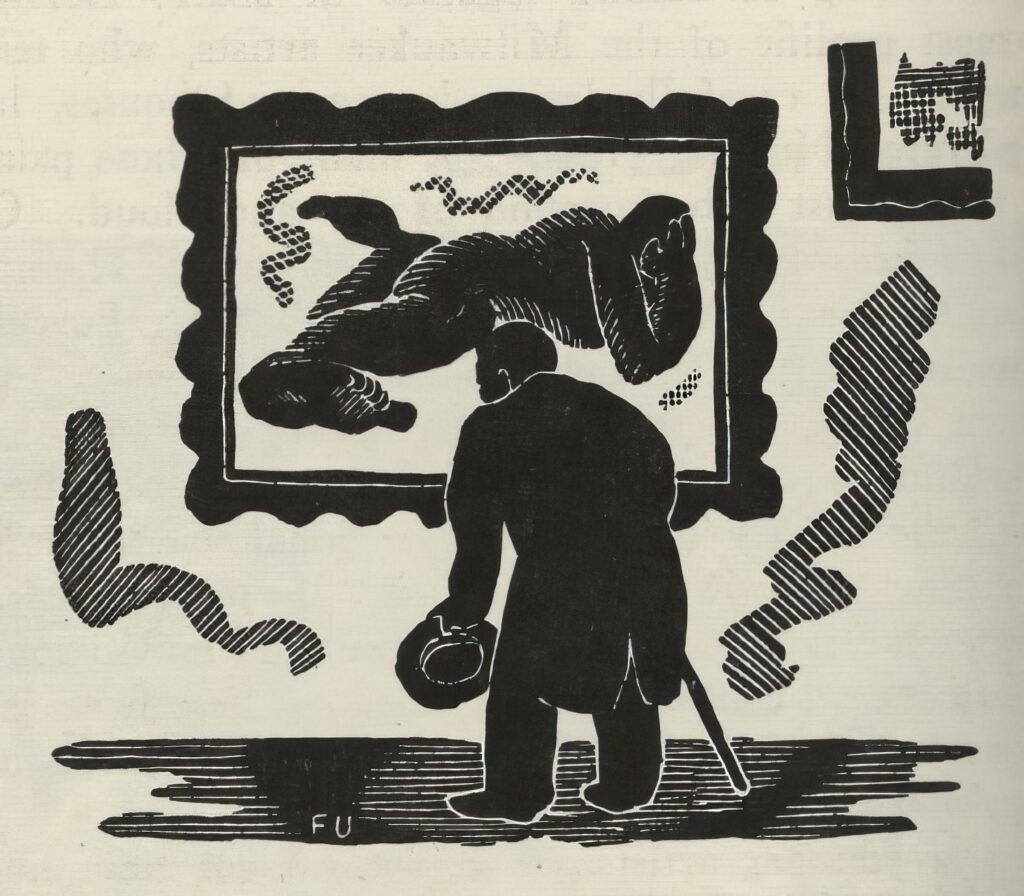
The Writers’ Project One of the WPA’s professional and community service programs was the Federal Writers’ Project, which aimed to provide jobs for unemployed writers, teachers, and researchers. In Wisconsin, the writers’ project was headed by Dorothy Miller under the guidance of the Wisconsin Historical Society.
Miller and her team of about 50 fieldworkers, typists, and volunteers conducted over 600 interviews across the state from 1936-1938. They collected a trove of folklore directly from residents – including 1,000 stories, 3,000 songs, 1,500 games and superstitions, 9,000 sayings, and 8,000 other cultural items like tales of pioneer life, Native American traditions, and folk music from immigrant communities.
While only a few small booklets were published at the time, nearly 1,000 pages of these invaluable interviews have now been digitized and made available online, preserving a rich record of Wisconsin’s grassroots heritage.
Other WPA Arts Projects In addition to the writers’ project, the WPA funded other arts employment programs in Wisconsin, including:
- The Federal Arts Project – Supported artists by commissioning murals, paintings, and other works for public buildings and parks around the state.
- The Federal Music Project – Provided jobs for unemployed musicians by organizing community concerts, instruction, and music transcription.
- The Federal Theatre Project – Employed writers, actors, and technicians to produce low-cost plays and theater performances.
- The Milwaukee Handicraft Project – Offered training and jobs in crafts like bookbinding, weaving, and toy-making.
These WPA arts initiatives didn’t just create jobs – they helped make art, music, theater and other cultural works accessible to many Wisconsinites during the Depression era when entertainment budgets were limited. The artists, musicians, actors and craftspeople employed were able to enrich their communities while supporting themselves through federal work relief.
The Federal Art Project propelled Utpatel’s career even further, leading to work illustrating book covers and interior artwork for pulp fiction magazines and novels in his later years. His sinister, shadowy images of spectral beings and prehistoric monsters famously graced the covers of many early H.P. Lovecraft works published by Arkham House.
While Utpatel’s commercial illustrations channeled the eerie and unsettling, his public woodcuts for the Federal Art Project remained grounded in documenting the struggles and perseverance of everyday people living through the Great Depression. A collection of 19 of these powerful works are preserved at the Wisconsin Historical Society, an important artistic record of one of America’s most difficult eras.

